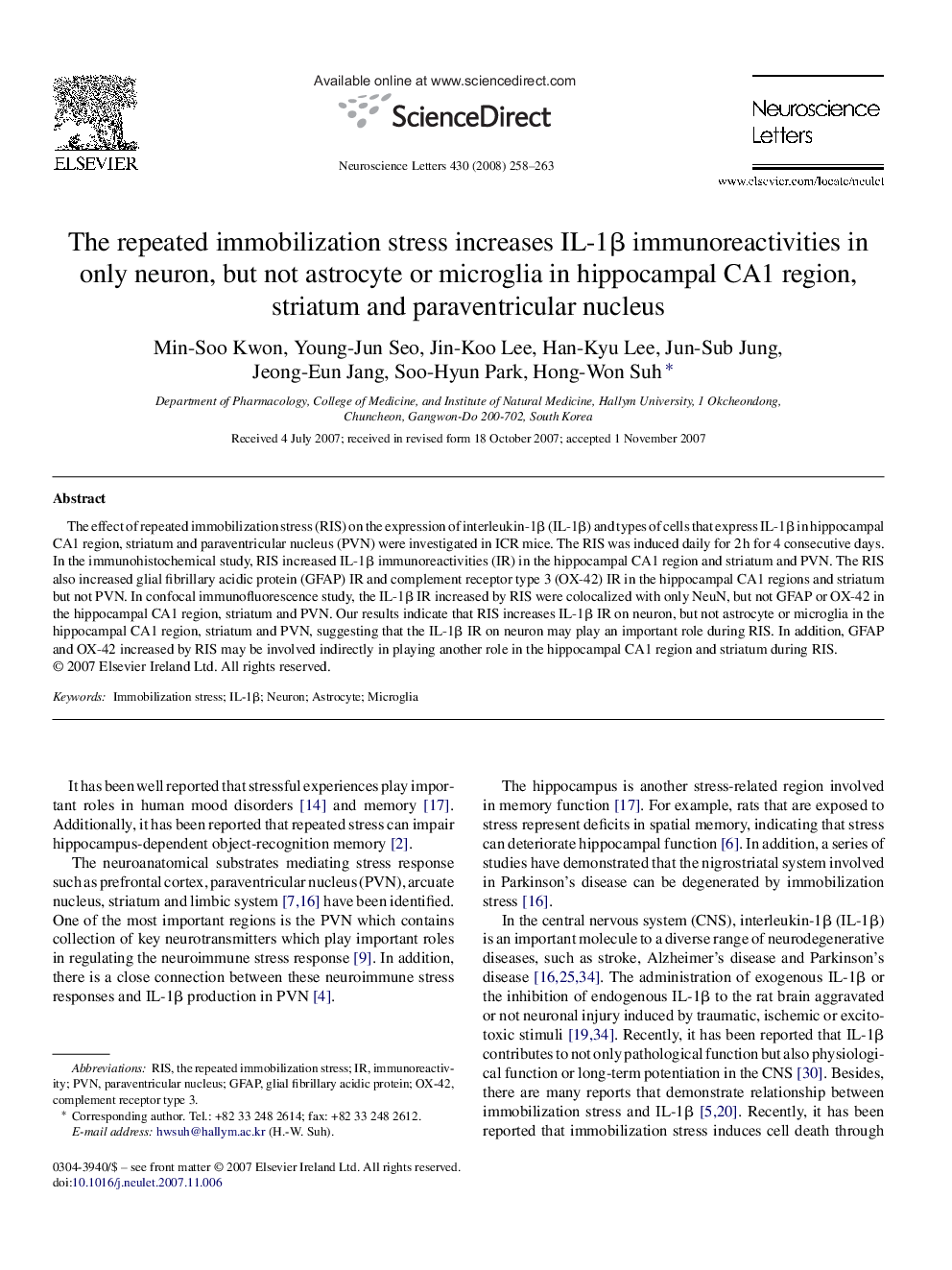| Article ID | Journal | Published Year | Pages | File Type |
|---|---|---|---|---|
| 4348851 | Neuroscience Letters | 2008 | 6 Pages |
The effect of repeated immobilization stress (RIS) on the expression of interleukin-1β (IL-1β) and types of cells that express IL-1β in hippocampal CA1 region, striatum and paraventricular nucleus (PVN) were investigated in ICR mice. The RIS was induced daily for 2 h for 4 consecutive days. In the immunohistochemical study, RIS increased IL-1β immunoreactivities (IR) in the hippocampal CA1 region and striatum and PVN. The RIS also increased glial fibrillary acidic protein (GFAP) IR and complement receptor type 3 (OX-42) IR in the hippocampal CA1 regions and striatum but not PVN. In confocal immunofluorescence study, the IL-1β IR increased by RIS were colocalized with only NeuN, but not GFAP or OX-42 in the hippocampal CA1 region, striatum and PVN. Our results indicate that RIS increases IL-1β IR on neuron, but not astrocyte or microglia in the hippocampal CA1 region, striatum and PVN, suggesting that the IL-1β IR on neuron may play an important role during RIS. In addition, GFAP and OX-42 increased by RIS may be involved indirectly in playing another role in the hippocampal CA1 region and striatum during RIS.
